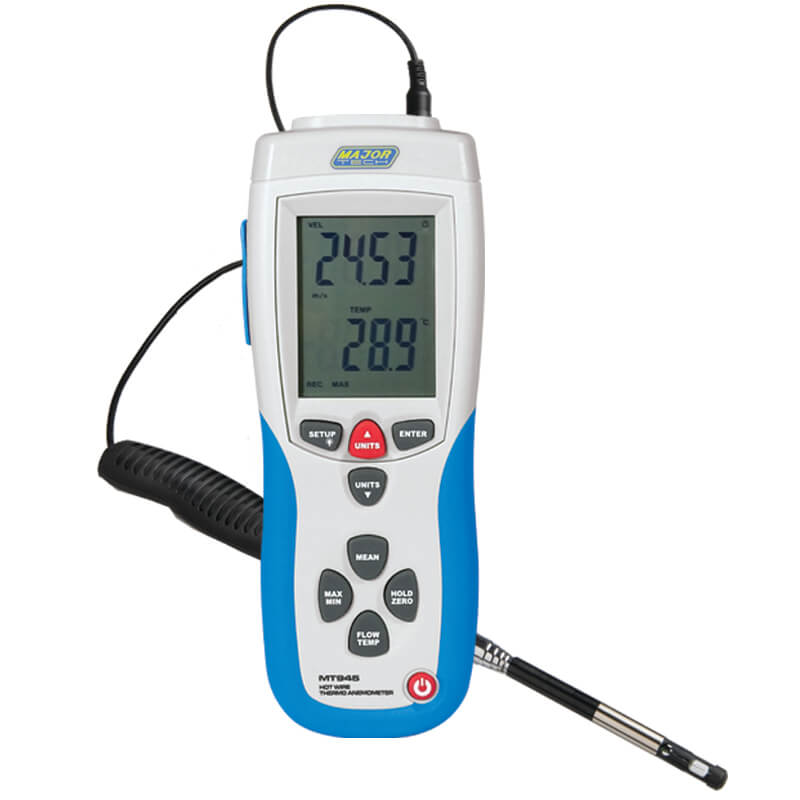Anemometer Innovations: The Most Recent Technology for Wind Rate Measurement
Anemometer Innovations: The Most Recent Technology for Wind Rate Measurement
Blog Article
All You Need to Understand About Anemometers: How They Work, Why They Matter, and Where to Use Them
Anemometers, though often overlooked in the realm of clinical tools, play an essential function in different fields, offering important understandings right into wind rate and airflow patterns. Understanding the mechanics behind these devices is crucial for anyone seeking to harness the power of this data. From meteorologists tracking weather condition patterns to designers creating structures with wind loads in mind, the applications of anemometers are significant and diverse. As we explore the ins and outs of anemometer technology, we will certainly uncover the internal functions of these devices, their relevance, and the key factors to consider when selecting the right anemometer for particular applications.

Anemometer Essentials
An important instrument used to gauge wind speed and direction, the anemometer plays a critical duty in weather forecasting and various sectors. An anemometer usually contains three or 4 cups that rotate in the wind, a vane that directs right into the wind, and sensing units to track the motions or turnings. By determining the rotations or activities over a particular time duration, the anemometer can identify wind rate. The vane helps determine wind direction by directing into the wind, giving useful data for weather forecasting, aeronautics, maritime operations, environmental monitoring, and wind energy applications.
There are numerous types of anemometers available, consisting of mug anemometers, vane anemometers, hot-wire anemometers, and sonic anemometers, each with its one-of-a-kind features and applications. Mug anemometers are frequently used for basic wind speed measurements, while vane anemometers are preferred for directional dimensions.
Principles of Anemometer Procedure
Structure on the fundamental understanding of anemometer essentials, the concepts of anemometer procedure elucidate the auto mechanics behind wind rate and direction measurements. Cup anemometers, for circumstances, have 3 or even more mugs that capture the wind, triggering them to rotate quicker as the wind rate boosts. Hot-wire anemometers depend on a heated wire that cools down as wind passes over it, with the price of cooling down determining the wind rate.
Importance of Anemometers
The value of anemometers in meteorology and various sectors can not be overemphasized. Anemometers play a critical role in gauging wind rate and instructions, supplying necessary information for weather condition forecasting, climate studies, ecological monitoring, and air travel operations. Meteorologists rely upon anemometers to gather accurate wind data, helping them comprehend weather patterns, anticipate tornados, and concern prompt cautions to the public. In industries such as building and construction, farming, sustainable power, and maritime operations, anemometers are utilized to maximize processes, make certain safety, and boost performance. Wind ranch drivers make use of anemometers to evaluate wind conditions and take full advantage of electrical power production from wind turbines. In the maritime sector, anemometers help ship navigation by offering real-time wind details to captains, assisting them make notified decisions to ensure safe trips. Overall, anemometers are essential tools that contribute significantly to safety and security, effectiveness, and educated decision-making in meteorology and a vast array of industries.
Applications Across Different Industries
Applications of anemometers click this link extend throughout varied industries, showcasing their versatility and utility beyond meteorology. In the renewable resource industry, anemometers play an essential function in examining wind problems for wind farm positionings, making sure ideal energy manufacturing. Industries like building and mining utilize anemometers to monitor wind rates, vital for security procedures, particularly when operating at heights or in open-pit mines where solid winds can position dangers. Anemometers are also indispensable in the aviation industry, aiding pilots in comprehending airspeed and wind instructions for secure take-offs and landings. The maritime market gain from anemometers for ship navigating, aiding sailors anticipate weather modifications and change paths accordingly. In farming, anemometers help farmers in taking care of crop spraying by providing real-time information on wind rate to avoid drift. Furthermore, anemometers locate applications in cooling and heating systems to optimize air flow and improve power efficiency in structures. The varied use cases of anemometers highlight their importance throughout numerous sectors, highlighting their important function in boosting operational safety and security and effectiveness (anemometer).

Selecting the Right Anemometer for Your Requirements
Picking the suitable anemometer customized to your particular requirements is necessary for getting exact wind rate and instructions measurements. When choosing an anemometer, take into consideration variables such as the desired application, called for measurement array, ecological problems, and preferred attributes. For general functions, a mug anemometer is ideal for gauging wind rate, while a vane anemometer offers wind direction data. Hot-wire anemometers are ideal for low airspeed dimensions, and ultrasonic anemometers provide high accuracy and sturdiness.

Verdict
To conclude, anemometers play a vital role in measuring wind rate and direction across various sectors. Understanding the concepts of anemometer procedure is crucial for choosing the best gadget for details requirements. From weather forecasting to aeronautics, anemometers are essential devices for making certain and gathering accurate data safety in different applications. It is necessary to take into consideration the relevance of anemometers in order to make educated decisions when selecting the most ideal gadget for measuring wind problems.
There are various types of anemometers readily available, including mug anemometers, vane anemometers, hot-wire anemometers, and sonic anemometers, each with its special attributes and applications. Mug anemometers are generally used for fundamental wind speed dimensions, while vane anemometers are review favored for directional measurements. Hot-wire anemometers are ideal for reduced airspeeds, and sonic anemometers are suitable for high-precision measurements in research and industrial setups.Structure on the foundational understanding of anemometer essentials, the principles of anemometer procedure illuminate the technicians behind wind speed and direction measurements. For general objectives, a mug anemometer is appropriate for measuring wind rate, while a vane anemometer gives wind direction data.
Report this page